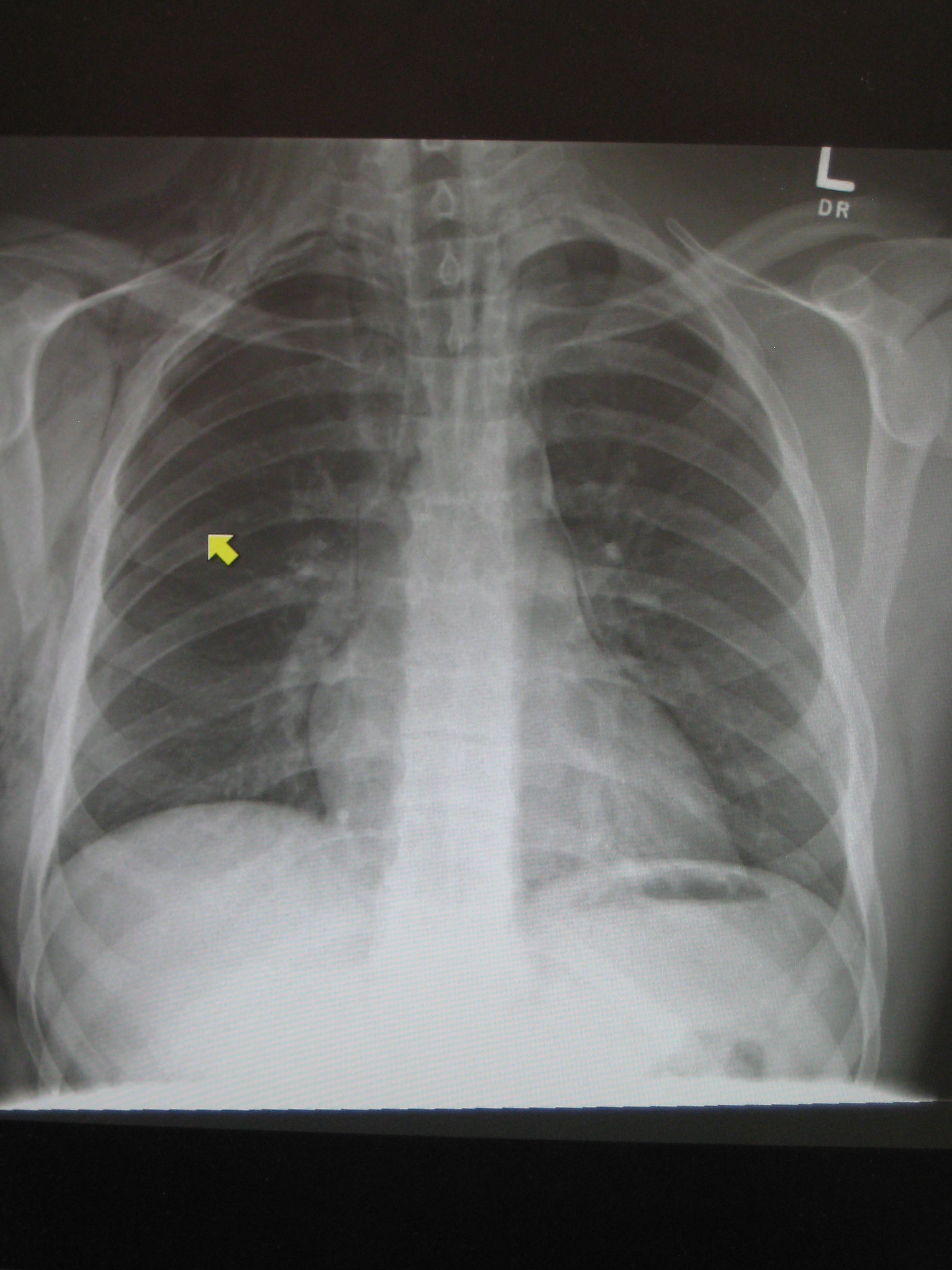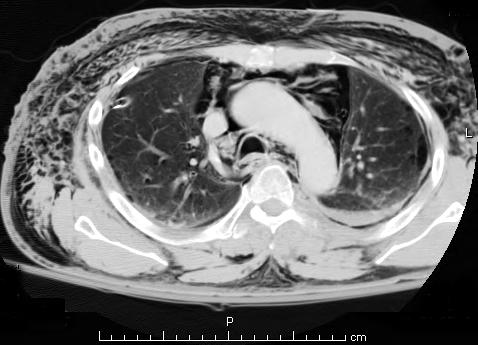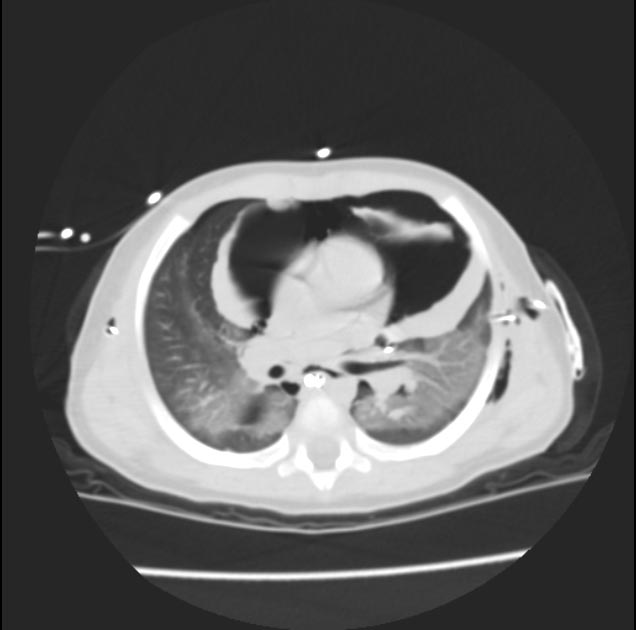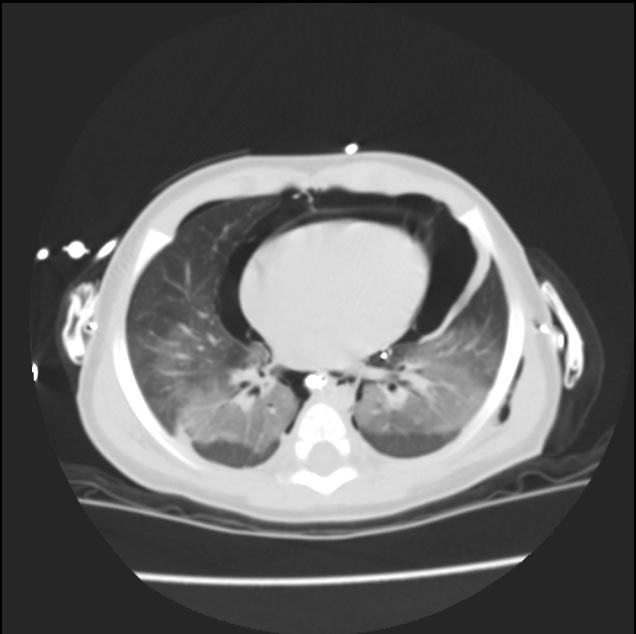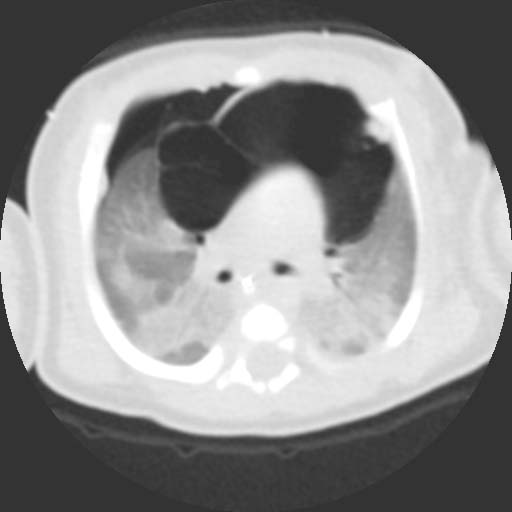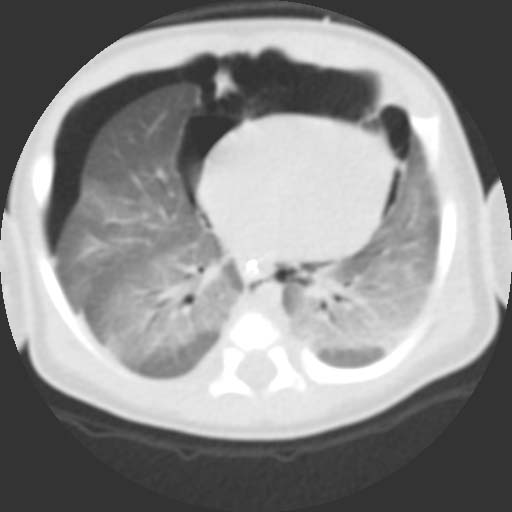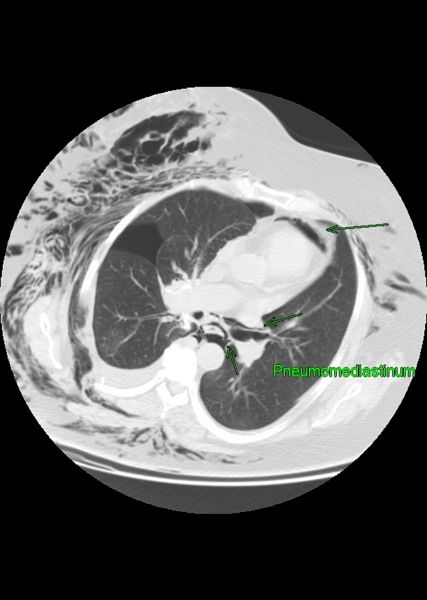Pneumomediastinum: Difference between revisions
No edit summary |
|||
| Line 1: | Line 1: | ||
__NOTOC__ | |||
{{Infobox_Disease | | {{Infobox_Disease | | ||
Name = {{PAGENAME}} | | Name = {{PAGENAME}} | | ||
| Line 14: | Line 15: | ||
MeshID = D008478 | | MeshID = D008478 | | ||
}} | }} | ||
{{ | {{Pneumomediastinum}} | ||
{{CMG}} | {{CMG}}; '''Associate Editor In Chief:''' {{CZ}} | ||
'''Associate Editor In Chief:''' {{CZ | |||
==Overview== | ==Overview== | ||
Revision as of 15:53, 24 September 2012
| Pneumomediastinum | |
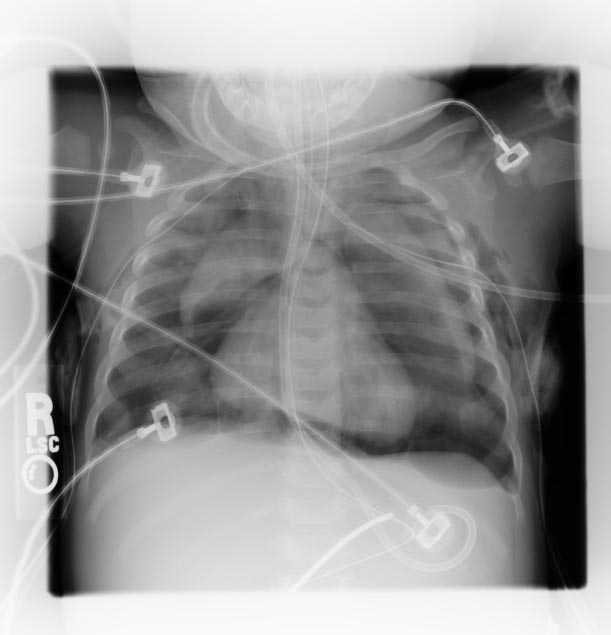 | |
|---|---|
| Pneumomediastinum: Spinnaker sail sign. (Image courtesy of RadsWiki) | |
| ICD-10 | J98.2, P25.2 |
| ICD-9 | 518.1, 770.2 |
| DiseasesDB | 29460 |
| MedlinePlus | 000084 |
| eMedicine | ped/1832 emerg/469 |
| MeSH | D008478 |
|
Pneumomediastinum Microchapters |
|
Diagnosis |
|---|
|
Treatment |
|
Case Studies |
|
Pneumomediastinum On the Web |
|
American Roentgen Ray Society Images of Pneumomediastinum |
Editor-In-Chief: C. Michael Gibson, M.S., M.D. [1]; Associate Editor In Chief: Cafer Zorkun, M.D., Ph.D. [2]
Overview
Pneumomediastinum (from Greek pneuma - "air", also known as mediastinal emphysema) is a condition in which air is present in the mediastinum.
First described in 1819 by René Laennec,[1][2] the condition can result from physical trauma or other situations that lead to high pressure within the alveoli of the lung, causing them to burst and leak air into the chest cavity.
Differential diagnosis of causes of pneumomediastinum
It is most commonly caused by:
- Oesophageal rupture, for example in Boerhaave syndrome
- Asthma or other conditions leading to alveolar rupture
It has also been associated with:
It can be induced to assist thoracoscopic surgery.[5]
It can be caused by a pulmonary barotrauma resulting when a person moves to or from a higher pressure environment, such as when a Scuba diver[6][7], a free-diver[8] or an airplane passenger[9] ascends or descends.
Clinical Presentation & Diagnosis
Pneumomediastinum is uncommon, it occurs when air leaks from any part of the lung or airways into the mediastinum and is often recognized on auscultation by a "crunching" sound timed with the cardiac cycle (Hamman's crunch). Subcutaneous emphysema is one of the symptoms of pneumomediastinum.
The diagnosis can be confirmed via chest X-ray showing a radiolucent outline around the heart and mediastinum or via CT scanning of the thorax.
Chest X Ray
-
Pneumomediastinum: Spinnaker sail sign (Image courtesy of RadsWiki)
-
Pneumomediastinum and right sided pneumothorax post first rib fracture in a mountain biking accident.
Computerized Tomography
-
A CT scan showing air in the mediastinum
Images shown below are courtesy of RadsWiki.
-
Pneumomediastinum
-
Pneumomediastinum
-
Pneumomediastinum and pneumothorax
-
Pneumomediastinum and pneumothorax
-
Pneumomediastinum and pneumothorax and subcutaneous emphysema
References
- ↑ Laënnec RTH. De l’auscultation médiate ou Traité du Diagnostic des Maladies des Poumon et du Coeur. 1st ed. Paris: Brosson & Chaudé; 1819.
- ↑ Roguin A (2006). "Rene Theophile Hyacinthe Laënnec (1781-1826): the man behind the stethoscope". Clinical medicine & research. 4 (3): 230–5. PMID 17048358.
- ↑ Vázquez JL, Vázquez I, González ML, García-Tejedor JL, Repáraz A (2007). "Pneumomediastinum and pneumothorax as presenting signs in severe Mycoplasma pneumoniae pneumonia". doi:10.1007/s00247-007-0611-1. PMID 17899058.
- ↑ 4.0 4.1 Hatzitolios A, Ntaios G (2007). "Spontaneous Pneumomediastinum May Be Associated with Both Anorexia Nervosa and Obesity". doi:10.1007/s00408-007-9037-7. PMID 17909893.
- ↑ Utsumi T, Shiono H, Fukai I, Akashi A (2007). "Artificial pneumomediastinum facilitates thoracoscopic surgery in anterior mediastinum". Interactive cardiovascular and thoracic surgery. 6 (3): 411–2. doi:10.1510/icvts.2006.147355. PMID 17669882.
- ↑ Tetzlaff K, Reuter M (1998). "Recurrent pulmonary barotrauma (PBT) in a previously healthy male scuba diver who suffered from repeated pneumomediastinum after shallow-water scuba dives". Undersea Hyperb Med. 25 (2): 127–8. PMID 9670439. Retrieved 2008-06-05.
- ↑ Dr. Richard Moon, Diver's Alert Network Vice President and Medical Director, http://www.diversalertnetwork.org/medical/articles/article.asp?articleid=40
- ↑ Jacobson FL, Loring SH, Ferrigno M (2006). "Pneumomediastinum after lung packing". Undersea Hyperb Med. 33 (5): 313–6. PMID 17091828. Retrieved 2008-06-05.
- ↑ Nicol E, Davies G, Jayakumar P, Green ND (2007). "Pneumopericardium and pneumomediastinum in a passenger on a commercial flight". Aviat Space Environ Med. 78 (4): 435–9. PMID 17484349. Retrieved 2008-06-05. Unknown parameter
|month=ignored (help)
External links
Acknowledgements
The content on this page was first contributed by: C. Michael Gibson M.S., M.D.
Template:Certain conditions originating in the perinatal period
Template:Respiratory pathology
Template:SIB
de:Mediastinalemphysem
it:Pneumomediastino
sv:Mediastinalemfysem
